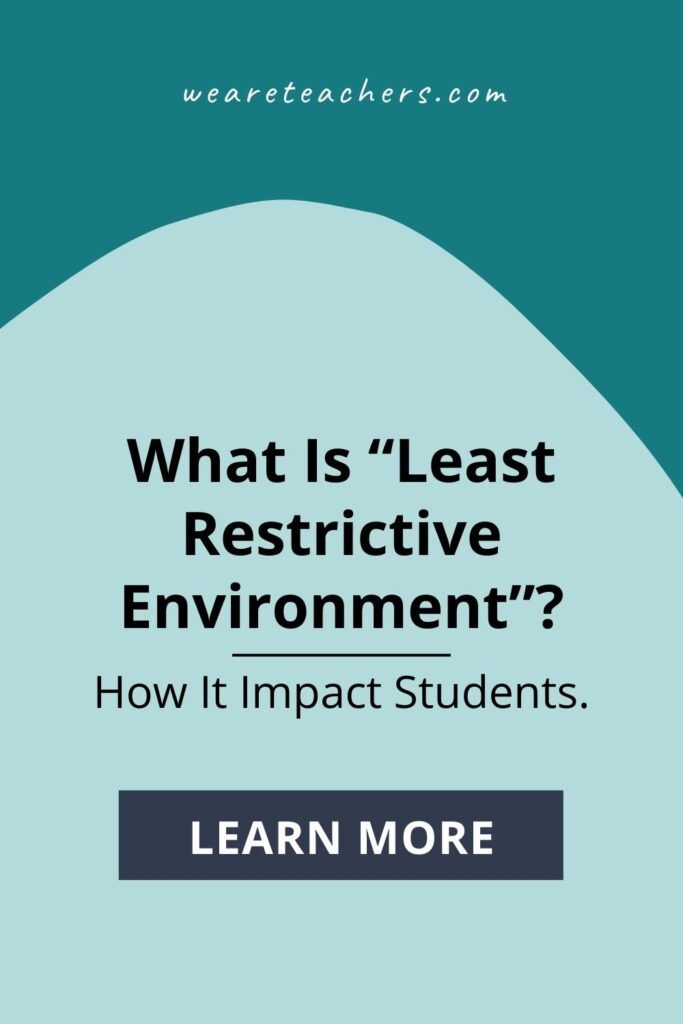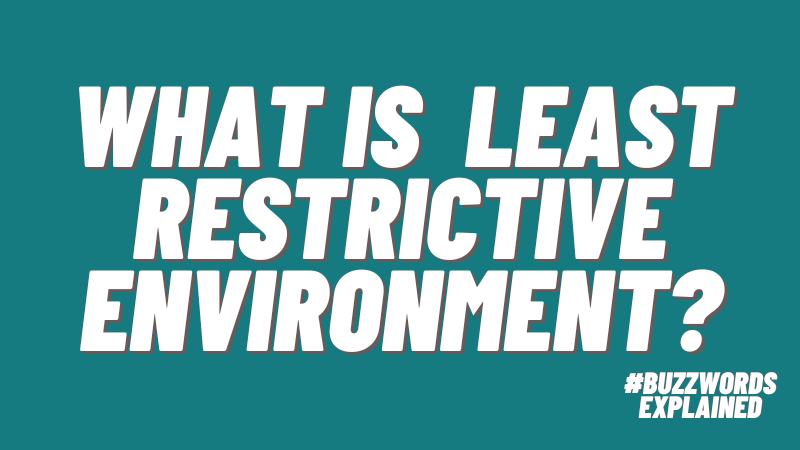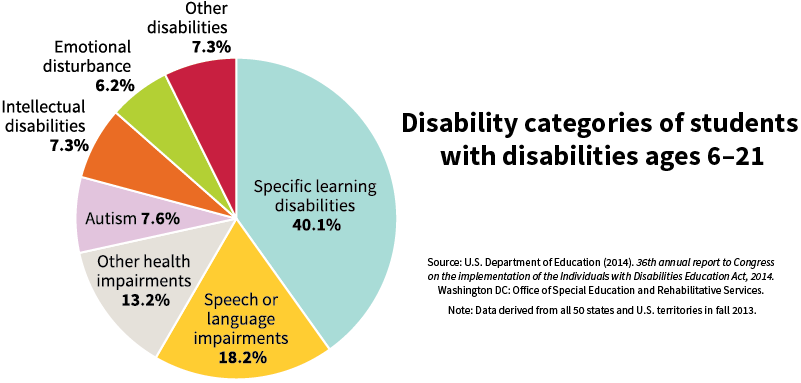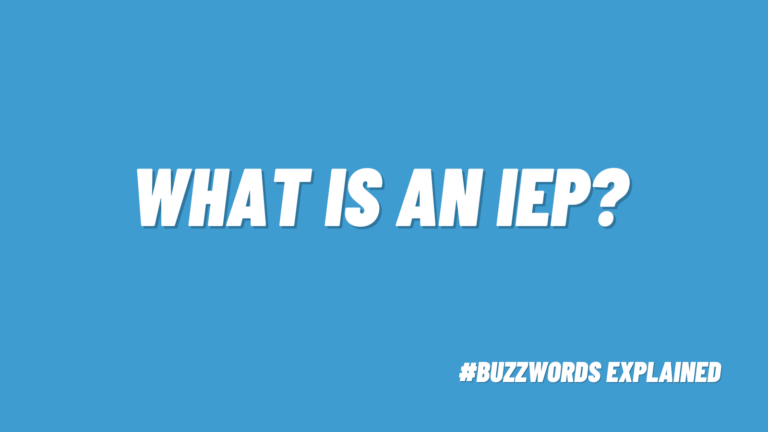For most students, where they’re educated isn’t much of a consideration after that meeting in June when next year’s class rosters are created—a student is either in your class or the class across the hall. But for kids with disabilities, the place where they learn is a big consideration because these kids need to receive instruction in a least restrictive environment (LRE).
So, what is LRE and how does it impact students?
What is “least restrictive environment”?
Essentially, a child’s least restrictive environment is general education. For kids with disabilities, that means general education as much as possible, but placement will always be unique to each student. Where a child receives their education is in relation to general education and is part of their FAPE (Free Appropriate Public Education). The question for an IEP team to consider is: If a child spends time outside of their LRE or general education, how much time? And is that the most appropriate setting for them?
As much as possible, a child should be taught within the same classroom as typical peers. And general education is the default setting for where all kids go to school. But general education may not be the appropriate place for some kids with disabilities to learn best. For example, a child with an intellectual disability may require a modified curriculum and small-group instruction that is best provided in a self-contained class. Or a student with a learning disability may need small-group instruction a few times per week to practice reading comprehension skills that are on their IEP.
Read more: understood.org
Is least restrictive environment (LRE) a law?
Least restrictive environment is part of IDEA, a federal law. The main special education law is the 1975 Individuals With Disabilities Education Act (IDEA). In IDEA, the LRE provision states that:
“… to the maximum extent appropriate, children with disabilities, including children in public or private institutions or other care facilities, are educated with children who are not disabled, and special classes, separate schooling or other removal of children with disabilities from the regular educational environment occurs only when the nature or severity of the disability of a child is such that education in regular classes with the use of supplementary aids and services cannot be achieved satisfactorily.”
[20 U.S.C. Sec. 1412(a)(5)(A); 34 C.F.R. Sec. 300.114; Cal. Ed. Code Sec. 56342(b).]
Under IDEA and the LRE provision, students should start in general education and be moved to settings like separate classrooms or schools only when it has been determined that they will learn best in that environment and that they would not be served best in general education with aids and supports (accommodations, modifications, and supports like a one-to-one aide or assistive technology).
The key wording is “to the maximum extent appropriate.” Special education is based on each child’s individual needs, and what may be right for one child may not be right for another. You’ve heard that special education is a service, not a place. So, when we’re thinking about a child’s LRE, we’re thinking about what services they need, and the location they will receive those services, rather than thinking about where they will be and then what they will receive.
Why is LRE important?
Before the first IDEA law was passed in 1975, students with disabilities were typically separated entirely from general education environments in separate schools or institutions. Since then, schools have had to consider general education for all students, regardless of disability. LRE is the foundation behind mainstreaming, inclusion, and a lot of differentiated education as teachers teach classrooms of diverse learners.
What are options for a child’s LRE?
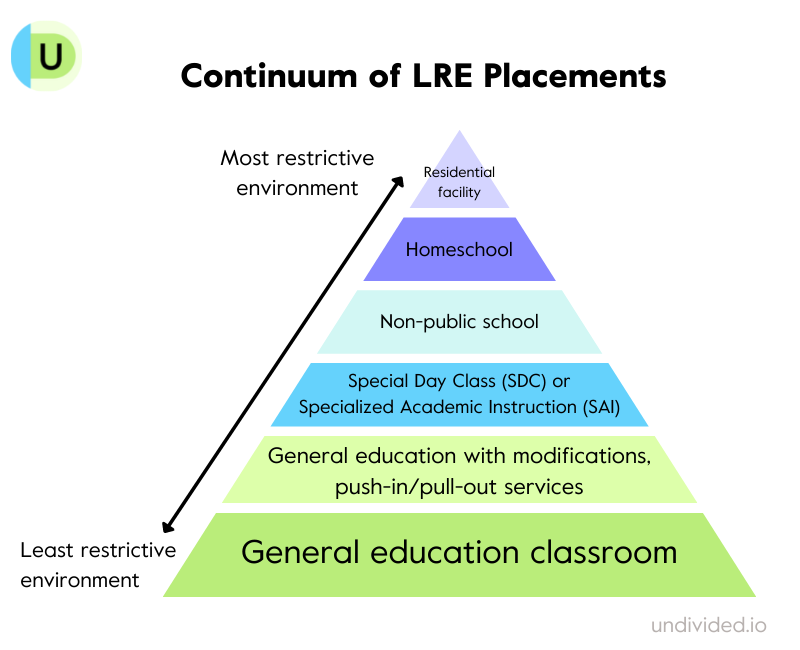
Source: undivided.io
Each child’s LRE looks different and is defined within their IEP. There are six typical structures for LRE:
- General education classroom with supports: A student spends the entire day in general education with some push-in supports, like assistive technology or accommodations.
- General education with pull-out supports: A student spends the majority of their day in general education with some time spent in a separate classroom (a resources or pull-out classroom) with the special education teacher, speech therapist, or occupational therapist, depending on what they need.
- Special education class (also called self-contained): A student spends the majority of their academic day in a class with other students with disabilities. They may go to general education for things like music, art, and assemblies.
- Separate school or program: A student spends their day in a school or program that is specifically designed to address their learning needs.
- Homebound instruction: A student receives services at home because their disability is such that they cannot attend class in a school setting.
- Residential placement: A student receives education in a separate school that doubles as a residential placement.
A child’s least restrictive environment may change over the course of their education as their needs change. They may start in a self-contained class until the IEP team decides to move them into a general education class with supports, or vice versa.
Read more: fortelawgroup.com
Read more: parentcenterhub.org
How is LRE determined?
Appropriate placement for a student is decided during the IEP meeting. The team (parent, teachers, a district representative, and other therapists who work with the child) all come together to decide what services a student is eligible for and how those services are going to be provided. LRE is in the how.
As an example, a team may decide to provide all the student’s services in the general education classroom, or they may decide that a student requires services within a self-contained class.
But there is no official definition of LRE for each type of disability, so LRE is often a hot-button topic in meetings.
Source: knilt.arcc.albany.edu
Once LRE is decided, the team will also explain (documented in the IEP) why the services a child receives can’t be provided in the general education setting. So, a child who receives speech therapy may need to have therapy in a small-group setting to really get the most from practicing their speech sounds and so they can work with a skilled speech therapist. Or a child who receives their education in a self-contained class may require full-day support from a special education teacher within a small group or structured setting in order to learn and meet their goals.
Additionally, IDEA states that certain aspects need to be considered when deciding on a placement:
- The educational benefits the student would receive in a general education classroom, with supports and services.
- Non-academic benefits to a student that come from interacting with peers.
- Disruption that may occur to other students that may impact the education of the student with disabilities. If a child’s behaviors are such that their participation in a general education environment disrupts education for other students, then the needs of the student with a disability cannot be met in general education.
LRE decisions cannot be made based on:
- Disability category
- Severity of a child’s disability
- The configuration of the delivery system
- The availability of educational or related services
- The space available
- Administrative convenience
The focus for LRE discussions should always be on where and how the student learns best.
Read more: wrightslaw.com
What are the benefits of educating kids in the LRE?
For many children with disabilities, being in general education with appropriate supports provides academic and social benefits. General education classrooms provide opportunities for kids to make friends and engage with peers, especially if teachers help engage kids in interactions. Kids without disabilities also benefit by engaging with kids who have disabilities. They learn how to communicate and befriend a wider range of peers and may learn about a specific disability.
Some of the benefits of educating kids within the LRE are:
- Interaction: Interaction is something that kids need practice with, so being in a setting with more kids and with kids who have better social skills can help kid with disabilities strengthen their own communication.
- Achievement: The achievement of kids with disabilities in general education depends on the individual student. However, learning and peer tutoring yielded academic benefits for kids with and without disabilities in inclusive classrooms. Students with more severe disabilities benefited from practicing skills in small groups of general education peers.
- Attitude: When all kids have positive experiences with peers who have disabilities, it improves attitudes about people with disabilities.
Read more: lrecoalition.org
What are the challenges of implementing LRE?
The challenges in implementing LRE are those associated with a diverse classroom—for example, how to balance each student’s individual needs with the class as a whole. That’s where things like differentiated instruction and collaboration come in. Working with a special education teacher and making sure you know each student’s needs and accommodations will go a long way to making sure LRE is paying off.
Read more: www.weareteachers.com
What is the general education teacher’s role in LRE?
If you’re a teacher with students with disabilities, part of your job will be creating community. Your role in LRE is to engage all the students in your class. To do that, you’ll collaborate with the teachers and therapists who may be working with you, or pulling kids out of your room.
Some ways that you may collaborate:
- Planning lessons that support students with IEPs with accommodations. These include preferential seating, chunking, or pulling kids into small groups for practice or testing.
- Leading small groups: Students with mild disabilities (like a learning disability) do well when teachers use inclusive small groups to teach skills.
- Collaborating with special education teachers to provide modified work or co-teach lessons.
- Collecting data about how a particular setting is working for a student.
There are some school-level considerations that make LRE work for everyone:
- Teacher training: Programs that had strong teacher training and models produced higher gains for students with severe disabilities and greater progress compared to peers in special education settings.
- Curriculum: The general education curriculum should be accessible, even with modifications, for all students in a class. That helps a teacher truly create an LRE for every student.
Read more: What Is Inclusion in Education?
Read more: inclusionevolution.com
Least Restrictive Environment Resources
The PACER Center’s overview of LRE and FAPE.
The Inclusion Reading List
Professional development books for your teaching library:
The Inclusive Classroom: Strategies for Differentiated Instruction by Margo Mastropieri and Thomas Scruggs (Pearson)
Behavior Solutions for the Inclusive Classroom by Beth Aune
Autism Spectrum Disorder in the Inclusive Classroom by Barbara Boroson (Teaching Strategies)
High Leverage Practices for Inclusive Classrooms by James McLeskey (Routledge)
Picture books for the inclusive classroom
Your students don’t know about LRE, but they’re definitely curious about the other kids in your class. Use these books with elementary school students to set the tone and teach them about various disabilities.
All Are Welcome by Alexandra Penfold
All My Stripes: A Story for Children With Autism by Shaina Rudolph
Just Ask! Be Different, Be Brave, Be You by Sonia Sotomayor
Brilliant Bea: A Story for Kids With Dyslexia and Learning Differences by Shaina Rudolph
A Walk in the Words by Hudson Talbott
Have questions about LRE and how to understand it for the students you teach? Join the WeAreTeachers HELPLINE group on Facebook to exchange ideas and ask for advice!
Plus, check out inclusive classroom spaces for students with disabilities.
